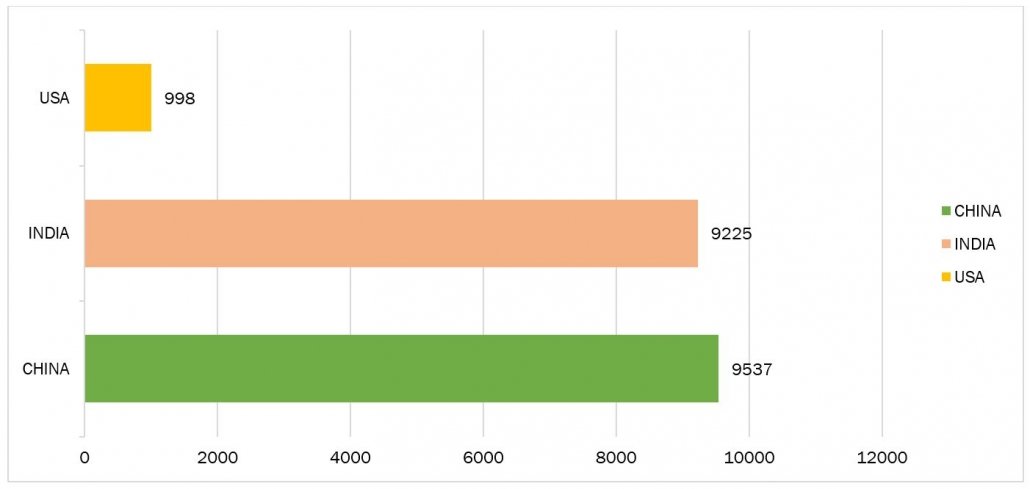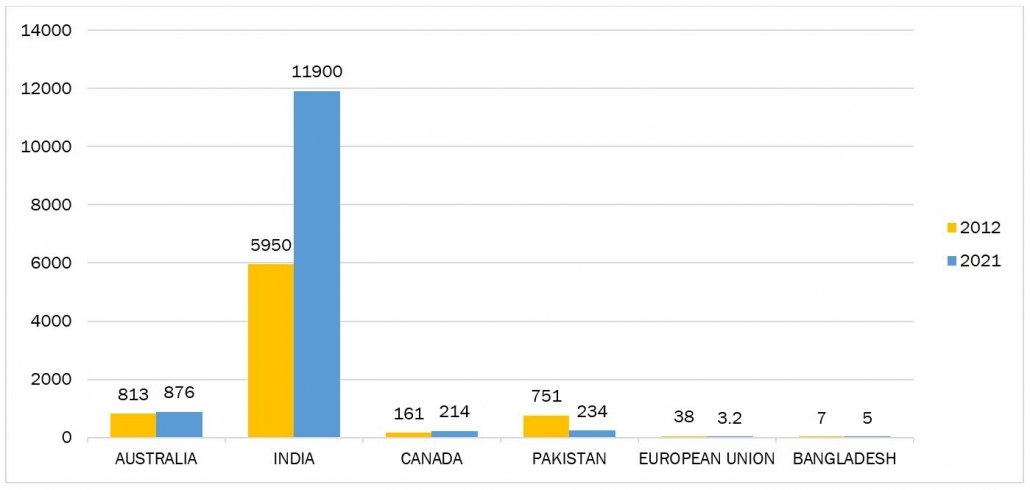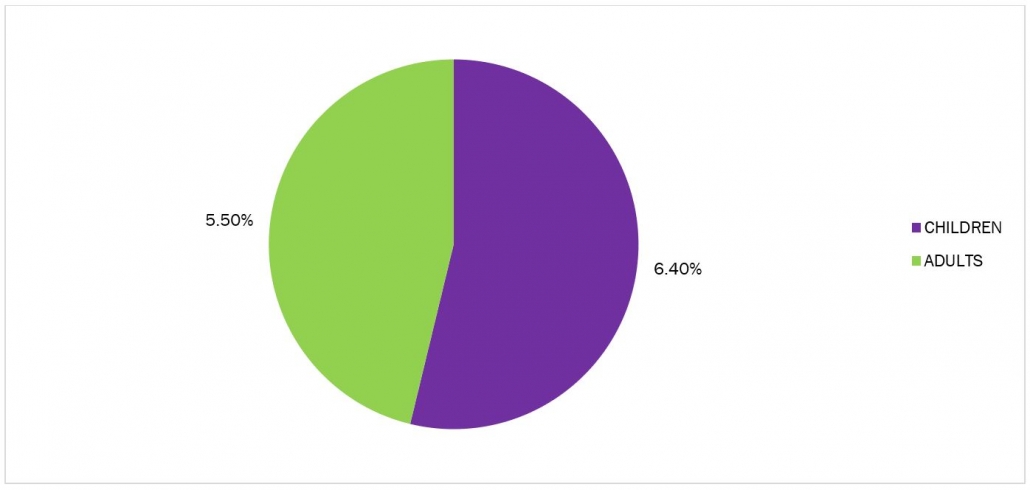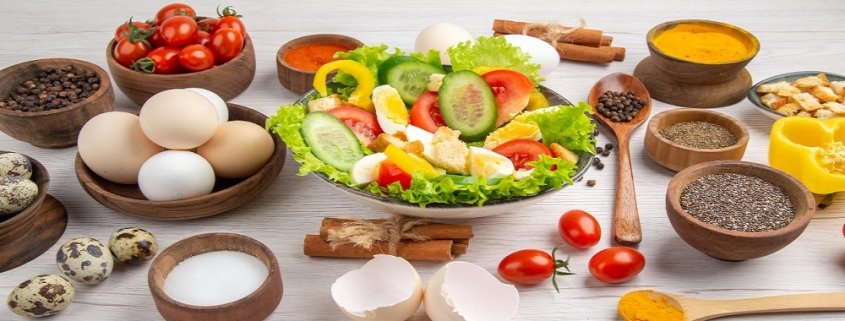Navigating Wellness: Unveiling the Top 10 Food Ingredients
Embarking on a journey towards a healthier lifestyle involves not just mindful choices but also a keen understanding of the building blocks that contribute to our well-being. In the realm of nutrition, certain ingredients stand out not only for their culinary versatility but also for their remarkable health benefits. Join us as we explore the “Top 10 Healthy Food Ingredients” that serve as nutritional powerhouses, offering a harmonious blend of flavor and wellness. From nutrient-rich superfoods to wholesome staples, this article unveils the essential ingredients that gratify our taste buds and also nourish our bodies, contributing to a balanced and health-conscious culinary experience. Let’s dive into the world of nutritious delights and discover the key components that make every meal a step towards a healthier, more vibrant life.
The top 10 food ingredients are:
- Broccoli
- Salmon
- Ghee
- Chickpeas
- Yogurt
- Berries
- Eggs
- Oats
- Rice
- Wheat
Let’s discuss each one in detail.
1. Broccoli
Broccoli has garnered significant attention recently due to its impressive nutritional profile and numerous health advantages. Recognized as a nutritional powerhouse, broccoli is rich in essential nutrients. It stands out as an excellent provider of vitamins C, K, and A, along with essential minerals like potassium, calcium, and iron. The vegetable also boasts several antioxidants, including vitamins C and E, β-carotene, and diverse flavonoids. These antioxidants play a crucial role in shielding cells from potential damage caused by harmful free radicals, thereby reducing the risk of chronic diseases. Additionally, broccoli serves as a valuable source of dietary fibre, contributing to digestive health by facilitating digestion, promoting a sense of fullness, and maintaining a healthy digestive system. In 2021, according to data from the Food and Agricultural Organisation (FAO) on Cauliflower and broccoli production, China produced 9537 thousand metric tons, India generated 9225 thousand metric tons, and the USA contributed 998 thousand metric tons.
Figure 1: Production of Cauliflower and Broccoli, in 2021, In Thousand MT

Source: Food and Agricultural Organisation
2. Salmon
Salmon is a versatile and flavorful ingredient that is widely celebrated in the culinary world. Known for its rich taste and high nutritional value, salmon is a popular choice in various cuisines. This fatty fish is a powerhouse of omega-3 fatty acids, which are essential for heart health and brain function. Its firm and succulent flesh makes it suitable for grilling, baking, broiling, or even raw consumption in dishes like sushi. Salmon complements a wide range of flavors and can be seasoned with herbs, spices, or marinades to enhance its taste. The distinct pink color of its flesh adds vibrancy to plates, making it an appealing ingredient for both home cooks and professional chefs. Whether served as a fillet, steak, or smoked, salmon’s unique flavor profile and nutritional benefits make it a beloved choice for creating delicious and wholesome meals.
In October 2021, JCCU introduced the “CO-OP Smoked Salmon Trout Cut-off” as the inaugural PB product utilizing BAP-certified salmon in Japan, marking a milestone in the CO・OP Sustainable Product series. This series prioritizes the main ingredients that align with environmental and societal friendliness. The Best Aquaculture Practices (BAP) certification, a comprehensive system covering hatcheries, feed mills, aquaculture farms, and processing plants, ensured environmental and social responsibility, as well as the health and food safety of the farmed fish and shellfish throughout all production stages.
3. Ghee
Ghee, a clarified form of butter, has a rich history and is a prominent ingredient in various culinary traditions worldwide. Produced by simmering butter to separate the milk solids and water content, ghee is known for its distinct nutty flavor and aromatic qualities. Its high smoke point makes it a preferred choice for cooking methods like frying and sautéing. Ghee is celebrated not only for its culinary versatility but also for its potential health benefits. It is believed to contain healthy fats, including conjugated linoleic acid (CLA), which may have anti-inflammatory and antioxidant properties. Additionally, ghee is free of lactose and casein, making it suitable for individuals with dairy sensitivities. Due to its rich flavor and numerous applications in both savory and sweet dishes, ghee continues to be a cherished ingredient in diverse cuisines.
In December 2020, the Department of Consumer Affairs conducted a survey evaluating various ghee brands. According to the comprehensive test results, Anik, priced at Rs. 54.5 per 100ml, claimed the top position, followed by Madhusudan at Rs. 55.5 per 100ml and Verka at Rs. 48 per 100ml. Verka was identified as the Value-for-Money brand. Mother Dairy exhibited the highest milk fat content, followed by Madhusudan and Amul. Verka showed the highest Vitamin A content, surpassing Anik. The survey confirmed the absence of adulteration with vegetable fat and animal fat in all tested brands. All brands met the minimum requirements outlined in national standards, affirming their compliance and safety for consumption.
4. Chickpeas
Chickpeas, also recognized as garbanzo beans, are legumes rich in protein, fibre, and complex carbohydrates, with relatively low-calorie content. They are commonly used in various Indian and Mediterranean dishes. The leading chickpea exporting countries in 2022 were Australia, India, and Canada, collectively contributing to over 40 percent of global exports. While Australia held the title of the largest exporter, it was not the top producer. Chickpea production increased from 813,000 tons in 2012 to 876,000 tons in 2021. In 2021, India emerged as the leading producer of chickpeas, with a production of 11.9 million tons, marking a growth of over 50 percent since 2012. Canada experienced a rise in production from 161,000 tons in 2012 to 214,000 tons in 2020, followed by a decline to 76,000 tons in 2021, attributed to decreased area and yields. Pakistan witnessed a drop in chickpea production from 751,000 tons in 2013 to 234,000 tons in 2021. In the European Union (EU), chickpea production decreased from 38,000 tons in 2012 to 3,200 tons in 2022, primarily due to a decline in harvested area since 2018. Bangladesh also saw a reduction in production from 7,000 tons in 2012 to 5,000 tons in 2021.
Figure 2: Production of Chickpeas Across Countries, From 2012 To 2021, In Thousand Tons

Source: US Department of Agriculture
5. Yogurt
Yogurt, a cultured dairy product, is not only a delicious addition to various culinary creations but also offers numerous health benefits. Rich in probiotics, yogurt promotes gut health by fostering the growth of beneficial bacteria in the digestive system. These live cultures contribute to improved digestion and absorption of nutrients. Additionally, yogurt is an excellent source of protein, calcium, and essential vitamins like B12. The probiotics in yogurt have been associated with enhanced immune function, helping the body defend against infections and illnesses. Regular consumption of yogurt may also aid in weight management and contribute to heart health by supporting healthy blood pressure levels. With its versatility and health-promoting properties, yogurt stands as a nutritious ingredient that adds both flavor and wellness benefits to a diverse range of recipes. A 2020 study from PubMed Central reveals that around 6.4% of children and 5.5% of adults include yogurt in their diet. The study indicates that yogurt consumers are, on average, 3.0 years younger than non-consumers among children and 2.6 years younger among adults. While the proportion of male and female children consuming yogurt is similar, there is a lower percentage of adult males who incorporate yogurt into their dietary habits.
Figure 3: Consumption of Yogurt Among Children and Adults, In 2020

Source: PubMed Central
6. Berries
Berries are a vibrant and flavorful addition to various dishes, renowned for their delicious taste and numerous health benefits. Packed with essential nutrients, berries, such as strawberries, blueberries, raspberries, and blackberries, are rich in antioxidants, vitamins, and fiber. Antioxidants help combat oxidative stress in the body, potentially reducing the risk of chronic diseases. Raspberries, blackberries, and blackcurrants contain essential nutrients, including vitamin C, dietary fibers, potassium, and folates. The vitamin C content in these berries varies from 9.7 to 60 mg/100 g, with strawberries containing the highest and blueberries the lowest. Strawberries, blackberries, and raspberries are notable sources of folate (vitamin B9) and potassium. Cranberries are particularly rich in vitamin E, while blackberries and blueberries boast high levels of vitamin K. Blackberries stand out as a rich source of beta-carotene, lutein, and zeaxanthin. Among these berries, blackcurrants have the highest levels of calcium, iron, phosphorus, and potassium. Incorporating these diverse berries into your diet not only provides a burst of delicious flavors but also ensures a nutritious intake of various vitamins and minerals.
7. Eggs
Eggs, a versatile and nutrient-packed ingredient, offer a myriad of health benefits. Rich in high-quality proteins, eggs provide essential amino acids necessary for muscle development and repair. They are also a fantastic source of vitamins, including B2 (riboflavin), B12, and D, contributing to energy metabolism and bone health. Additionally, eggs contain choline, aiding in brain development and function. Despite their past reputation, eggs are now recognized for their positive impact on heart health, as they are low in saturated fats and can help raise levels of “good” HDL cholesterol. Moreover, eggs are a satisfying and convenient food, promoting a feeling of fullness and potentially aiding in weight management. With their versatility in culinary applications, from breakfast omelets to baked goods, eggs stand as a nutritious and delicious addition to a well-balanced diet. In the fiscal year 2021-22, the country’s total egg production was 129.60 billion units, reflecting a 6.19% increase compared to the previous year. The five primary egg-producing states in India were Andhra Pradesh (20.41%), Tamil Nadu (16.08%), Telangana (12.86%), West Bengal (8.84%), and Karnataka (6.38%).
8. Oats
Oats, a versatile and nutritious grain, have gained widespread popularity for their numerous health benefits. Packed with essential nutrients, oats are a rich source of dietary fiber, particularly beta-glucans, which have been linked to various health advantages. Regular consumption of oats has been associated with improved heart health by helping to lower cholesterol levels. Additionally, oats are a good source of vitamins and minerals, including manganese, phosphorus, magnesium, and B-vitamins. Due to their low glycemic index, oats contribute to stable blood sugar levels, making them an excellent choice for those managing diabetes. Oats also provide a satisfying and sustained energy release, making them a popular choice for a wholesome breakfast or snack. With their versatility, oats can be incorporated into various dishes such as oatmeal, granola, smoothies, and baked goods, offering a delicious and nutritious addition to a balanced diet. The European Union accounted for 29% of the global production of oats in the 2022/2023 period, amounting to 7.41 million metric tons. Canada contributed 21% to the global production, totaling 5.23 million metric tons, while Russia constituted 18% of the global production, reaching 4.5 million metric tons during the same period.
9. Rice
Rice, a staple food for a significant portion of the global population, is a versatile and nutritious ingredient with numerous health benefits. Rich in carbohydrates, rice serves as an excellent energy source, fueling the body with the essential fuel needed for daily activities. Additionally, rice provides essential nutrients like vitamins and minerals, contributing to overall well-being. Brown rice, in particular, retains more nutrients due to its minimal processing, offering a good source of fiber, B vitamins, and minerals. The consumption of rice is associated with promoting digestive health, supporting weight management, and providing a gluten-free option for those with dietary restrictions. Its versatility allows for various culinary applications, making it a fundamental ingredient in diverse cuisines worldwide. Overall, rice stands as a wholesome and nutritious ingredient that plays a vital role in promoting a balanced and healthy diet. The introduction of a partial rice export ban by India in July 2023 marks a substantial change in the rice supply chain in Sub-Saharan Africa. Importantly, about 40 percent of the total consumption in the region is reliant on imports. Over recent years, Sub-Saharan Africa has increasingly depended on India as a major source of rice. The annual share of rice imports from India to Sub-Saharan Africa witnessed a significant surge, rising from 31 to 66 percent between 2019 and 2022, attributed to competitive pricing.
10. Wheat
Wheat is a versatile and widely consumed ingredient known for its health benefits. As a staple in many diets around the world, wheat offers essential nutrients, including dietary fiber, protein, and various vitamins and minerals. Whole wheat, in particular, is rich in fiber, promoting digestive health and aiding in weight management by providing a sense of fullness. The complex carbohydrates in wheat contribute to sustained energy release, making it an excellent source of fuel for the body. Additionally, wheat contains B-vitamins, such as folate, which plays a crucial role in cell division and DNA synthesis. While incorporating wheat into a balanced diet, it is important to consider whole grain options for maximum nutritional benefits. In January 2024, Ukraine anticipated a rise in wheat exports by 1.5 million tons to reach 14.0 million tons, attributed to robust exports to the European Union. However, the overall exports from Ukraine remained 22 percent lower compared to the previous year, primarily due to challenges in exporting to Africa and Asia through deep seaports, particularly before establishing the humanitarian corridor. The European Union’s wheat imports are projected to increase by 2.5 million tons in January 2024 to reach 11.0 million tons, although still slightly lower than the previous year. Looking ahead to the 2023/24 period, Russia is poised to achieve a new global export record, reaching 51.0 million tons, reflecting an increase of 3.5 million tons compared to the previous year.



